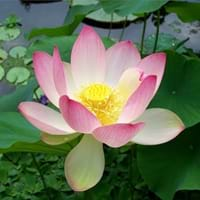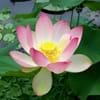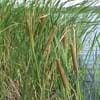Life Span
Perennial
Perennial
Origin
Southern Asia
Australia
Types
Not Available
Not Available
Number of Varieties
Not Available
Habitat
Ponds
Scrubs, tussock grasslands, Upland savannas
USDA Hardiness Zone
9-12
10-11
Sunset Zone
21,22
8, 9, 12, 13, 14, 15, 16, 17, 18, 19, 20, 21, 22, 23, 24
Habit
Clump-Forming
Upright/Erect
Flower Color
White, Red, Pink, Light Pink, Hot Pink, Rose, Coral
Lemon yellow
Flower Color Modifier
Bicolor
Bicolor
Fruit Color
Not Available
Gray Green
Leaf Color in Spring
Lime Green, Sea Green
Blue Green
Leaf Color in Summer
Lime Green, Sea Green
Blue Green
Leaf Color in Fall
Lime Green, Sea Green
Blue Green
Leaf Color in Winter
Not Available
Blue Green
Leaf Shape
Orbicular
Long Narrow
Plant Season
Summer, Fall
Spring
Sunlight
Full Sun, Partial Sun
Full Sun
Type of Soil
Clay, Loam
Loam, Sand
The pH of Soil
Neutral
Acidic, Neutral, Alkaline
Soil Drainage
Poorly Drained
Well drained
Bloom Time
Late Spring, Early Summer, Summer, Late Summer
Spring, Late Winter
Tolerances
Wet Site
Drought
Where to Plant?
Container, In Water, Pot
Ground
How to Plant?
From Rhizomes, Seedlings
Seedlings
Plant Maintenance
Medium
Medium
Watering Requirements
Requires 4 to 8 inches of water above the soil line
Do not water excessively
In Summer
Lots of watering
Lots of watering
In Spring
Moderate
Moderate
In Winter
Average Water
Average Water
Soil pH
Neutral
Acidic, Neutral, Alkaline
Soil Type
Clay, Loam
Loam, Sand
Soil Drainage Capacity
Poorly Drained
Well drained
Sun Exposure
Full Sun, Partial Sun
Full Sun
Pruning
Cut away fading foliage
Remove dead or diseased plant parts, Requires little pruning
Fertilizers
20N–4.4P–16.6K at 20-d intervals
All-Purpose Liquid Fertilizer, No fertilizers needed
Pests and Diseases
Aphids, Caterpillars
Insects, Root rot
Plant Tolerance
Drought
Drought
Flower Petal Number
Single, Double, Semi-Double
Single
Foliage Texture
Bold
Fine
Foliage Sheen
Matte
Matte
Attracts
Beetles, Insects
Butterflies
Allergy
Constipation
Asthma, Eye irritation, Headache, Nose Irritation, Throat itching, Vomiting
Aesthetic Uses
Beautification
Showy Purposes
Beauty Benefits
Promotes healthy skin, Provides herbal hair care
Not Available
Environmental Uses
Air purification
Air purification, soil stabilisation
Medicinal Uses
Antidiarrhoeal, Astringent, Cancer, Cardiotonic, Febrifuge, Hypotensive, Resolvent, Stomachic, Tonic
Not Available
Part of Plant Used
Flowers, Leaves, Root, Seeds, Stem
Flowers, Sap, Seeds
Other Uses
Leaves are used to wrap small parcels, Roasted seed is used as a coffee substitute, Root is used as a vegetable
Used as a dye, Wood is used fore making tools
Used As Indoor Plant
Yes
No
Used As Outdoor Plant
Yes
Yes
Garden Design
Feature Plant, Tropical, Water Gardens
Shade Trees, Street Trees
Botanical Name
NELUMBO nucifera
ACACIA aneura
Common Name
East Indian Lotus, Sacred Lotus
Mulga, True Mulga
In Hindi
पवित्र कमल
Mulga
In German
Heiliges Lotus
Mulga
In French
Lotus Sacré
Mulga
In Spanish
loto sagrado
Mulga
In Greek
ιερή Lotus
mulga
In Portuguese
Lotus sagrado
Mulga
In Polish
Sacred Lotus
Mulga
In Latin
sacra Lotus
Mulga
Phylum
Magnoliophyta
Magnoliophyta
Class
Magnoliopsida
Magnoliopsida
Family
Nymphaeaceae
Fabaceae
Clade
Angiosperms, Eudicots
Angiosperms, Eudicots, Rosids
Tribe
Not Available
Not Available
Subfamily
Nelumbonaceae
Not Available
Number of Species
Not Available
Not Available
Difference Between Sacred Lotus and Mulga Tree
If you are confused whether Sacred Lotus or Mulga Tree are same, here are some features about those plants to help you choose better. Many people think that these two plants have the same characteristics, but one can see Sacred Lotus and Mulga Tree Information and learn more about it. Fertilizers required for proper growth of Sacred Lotus are 20N–4.4P–16.6K at 20-d intervals, whereas for Mulga Tree fertilizers required are All-Purpose Liquid Fertilizer and No fertilizers needed. Hence, one should know the basic difference between Sacred Lotus and Mulga Tree if you are planning to have them in your garden to enhance its beauty.
<
Flowering PlantsImportance of Sacred Lotus and Mulga Tree
Want to have the most appropriate plant for your garden? You might want to know the importance of Sacred Lotus and Mulga Tree. Basically, these two plants vary in many aspects. Compare Sacred Lotus and Mulga Tree as they differ in many characteristics such as their life, care, benefits, facts, etc. Every gardener must at least have the slightest clue about the plants he wants to plant in his garden. Compare their benefits, which differ in many ways like facts and uses. The medicinal use of Sacred Lotus is Antidiarrhoeal, Astringent, Cancer, Cardiotonic, Febrifuge, Hypotensive, Resolvent, Stomachic and Tonic whereas of Mulga Tree is Not Available. Sacred Lotus has beauty benefits as follows: Promotes healthy skin and Provides herbal hair care while Mulga Tree has beauty benefits as follows: Promotes healthy skin and Provides herbal hair care.
Compare Facts of Sacred Lotus vs Mulga Tree
How to choose the best garden plant for your garden depending upon its facts? Here garden plant comparison will help you to solve this query. Compare the facts of Sacred Lotus vs Mulga Tree and know which one to choose. As garden plants have benefits and other uses, allergy is also a major drawback of plants for some people. Allergic reactions of Sacred Lotus are Constipation whereas of Mulga Tree have Asthma, Eye irritation, Headache, Nose Irritation, Throat itching and Vomiting respectively. Having a fruit bearing plant in your garden can be a plus point of your garden. Sacred Lotus has no showy fruits and Mulga Tree has no showy fruits. Also Sacred Lotus is not flowering and Mulga Tree is not flowering . You can compare Sacred Lotus and Mulga Tree facts and facts of other plants too.





